Metropolitan
Vickers
Prior to 1894 the area
of Manchester known as Trafford Park really was
parkland. The area was home to the de Trafford
family and around Trafford Hall was a deer park and
three farms.
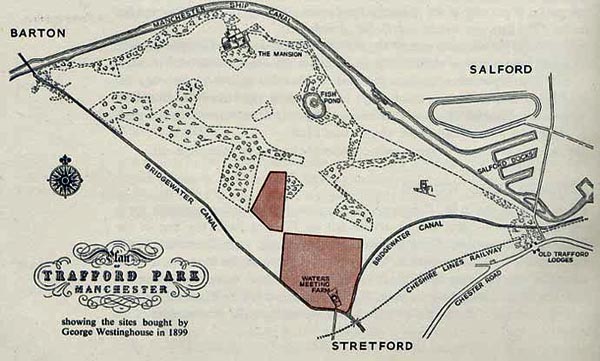
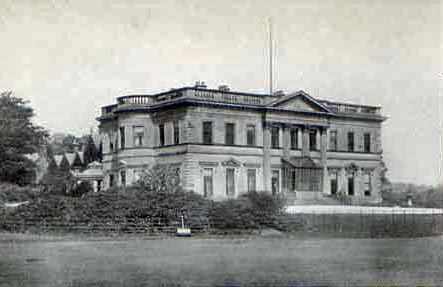
What changed in 1894 was the completion of the Manchester Ship Canal linking Manchester with the estuary of the River Mersey and making it possible for ocean going ships to sail into the city that was the birthplace of the Industrial Revolution.
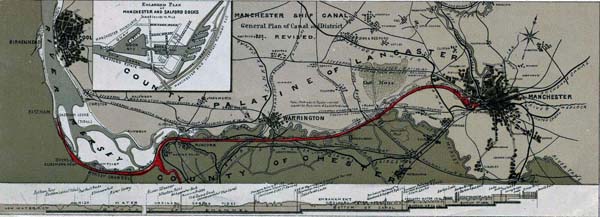
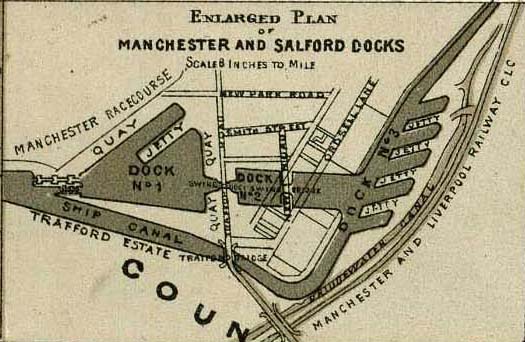


What changed in 1894 was the completion of the Manchester Ship Canal linking Manchester with the estuary of the River Mersey and making it possible for ocean going ships to sail into the city that was the birthplace of the Industrial Revolution.

Known affectionately
as The Big Ditch it runs for 36 miles and provides
navigation for ocean going ships into the edge of
the city centre. It cost £15 Million and took
7 years to build opening in 1894.

Sir Humphry de Trafford
opposed the construction of the canal. It took
three attempts to pass the legislation required to build
it and in the end construction began two years after Sir
Humphry had died. At the Manchester end an
extensive system of wharves was lined with warehouses
and the area became an obvious focus for further
industrial and commercial development. It was the
de Trafford Estate that offered the best location for
the factories, mills and warehouses that were attracted
to the commercial opportunities offered by the new port.
The Manchester Patent Fuel Company was the first to establish itself in this new industrial park in 1898. The first American company to build a factory was the Westinghouse Electrical Company, founded in 1886 by George Westinghouse. A British subsiduary of the US company, called British Westinghouse Electric Company, built a factory at a place called Water Meeting beside the Bridgewater Canal.
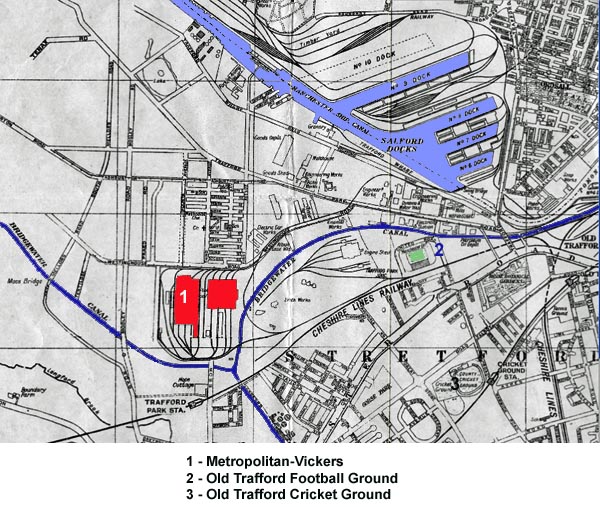
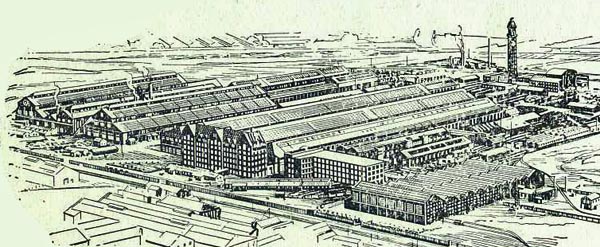
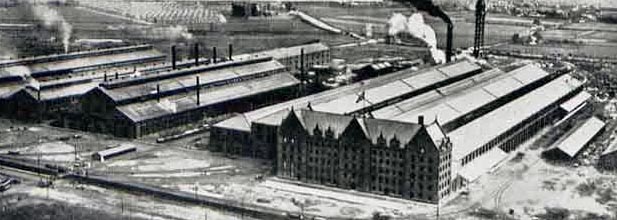

In addition to the factory Westinghouse built a village
for his workers on the American style grid system of
avenues and streets. The community had shops,
eating rooms, a dance hall, schools, a church, and a
cinema. The village can be seen in the map extract
below dated 1930.
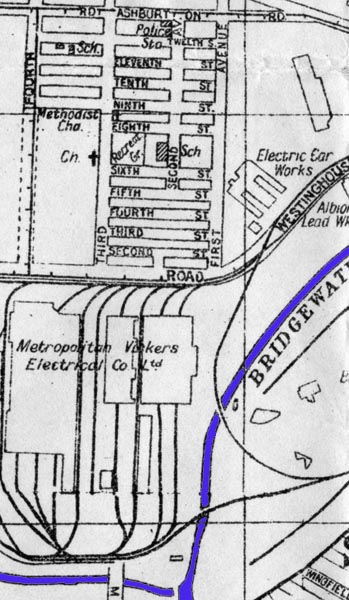
Throughout the life of Metrovicks there was a constant pattern of change. In 1928 Metrovick merged with the rival British Thomson-Houston (BTH), a company of similar size and basically the same product lineup. Combined, they would be one of the few companies able to compete with the Marconi Company or the English Electric Co on an equal footing. The next year the combined company was purchased by the Associated Electrical Industries (AEI) holding group, who also owned Edison Swan Electric Co (Ediswan); also Ferguson Pailin in Openshaw, Manchester. Rivalry between Metrovick and BTH continued, and AEI was never able to exert effective control over the two competing subsidiary companies.
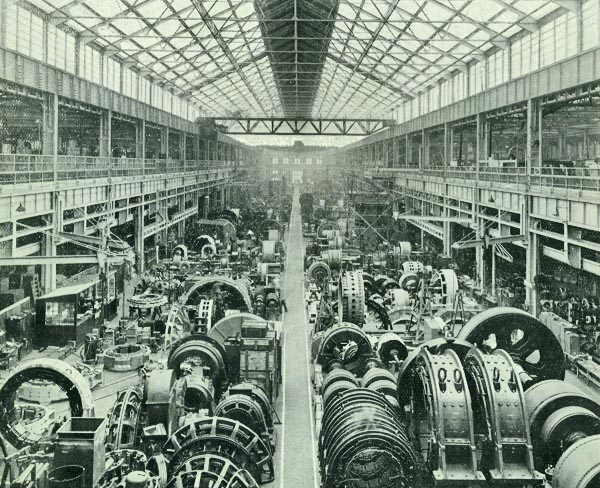
AEI’s technical excellence was highlighted in 1935 as Metrovick and B.T.H. became the first two firms in the world to construct jet engines (independently from each other). AEI’s greatest work during the War years was its aircraft. In 1938, Metrovick entered into a joint venture with A.V. Roe to manufacture aircraft. Metrovick assembled 'Manchester', 'Lancaster' and 'Lincoln' bombers for A.V. Roe at Trafford Park. As this type of work was very different from their traditional heavy engineering, a new factory was built on the western side of Mosley Road and this was completed in stages through 1940.
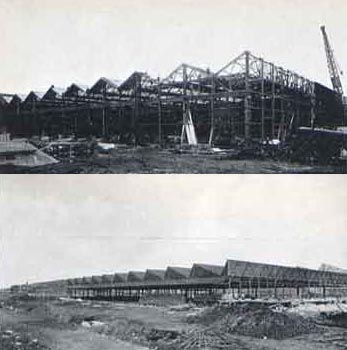
By the end of the war, M-V's had built 1,080
Lancasters. These were followed by 79 Avro Lincoln
derivatives before remaining orders were cancelled and
M-V's aircraft production ceased in December 1945.
After the war M-V was involved in the building of jet engines before selling off that business to Armstrong Siddeley in 1947. In the 1950s they were involved in the development of diesel-electric locomotives .
In 1960 the rivalry that had continued between Metrovick and BTH was eventually ended when the AEI management decided to rid themselves of both brands and conduct all their busines under the brand AEI. Seven years later AEI was purchased by GEC which changed its name to Marconi plc in 1999.
The Trafford Park factory closed and was demolished as was most of the village. Only a few remnants of the village remain. The M-V factory which at one time employed 20,000 people is gone forever.
The Manchester Patent Fuel Company was the first to establish itself in this new industrial park in 1898. The first American company to build a factory was the Westinghouse Electrical Company, founded in 1886 by George Westinghouse. A British subsiduary of the US company, called British Westinghouse Electric Company, built a factory at a place called Water Meeting beside the Bridgewater Canal.

The factory cost one
and a quarter million pounds to build and was erected
in an amazing 18 months.




The factory went
into production in 1902. That same year a
company owned by Westinghouses' rivals, General
Electric, called BTH (British Thomson-Houston) also
began to operate in Britain. Westinghouse went
into receivership in 1907 and this started the
transition of control in the company away from
George Westinghouse. In 1910 Westinghouse was
removed as chairman of the company. In 1916
British Westinghouse looked to the Metropolitan
Carriage Wagon Company to provide the funds to buy
the American shareholdings and enable the company to
progress its business.
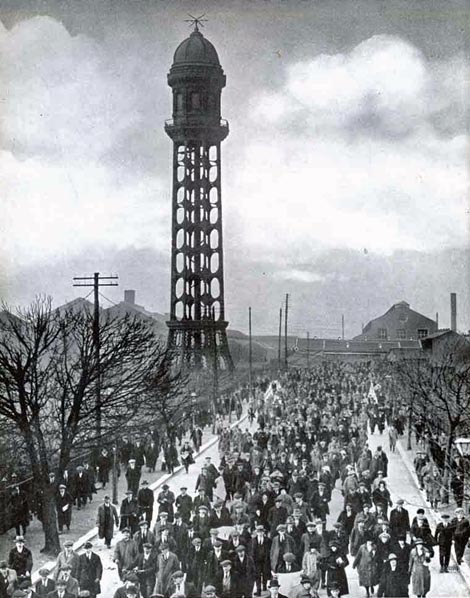
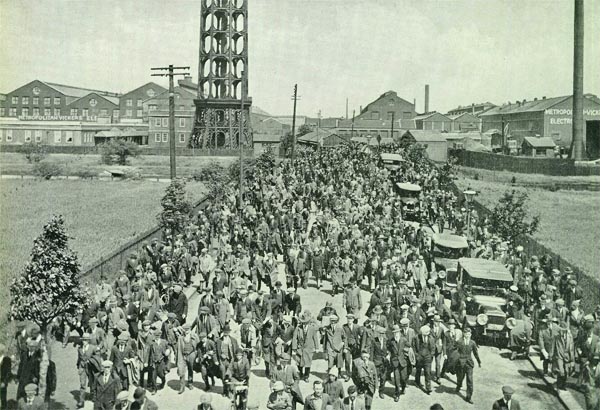
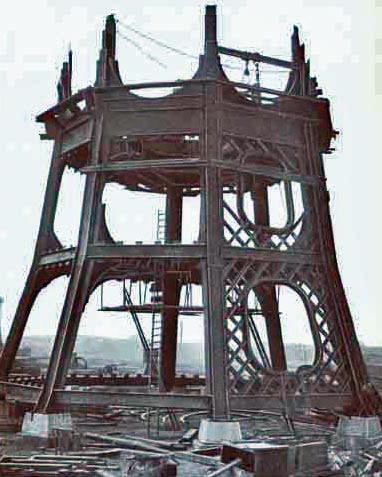
In 1919 the Metropolitan Carriage, Wagon and Finance Company and British Westinghouse were acquired by Vickers. In September of 1919 a new company called the Metropolitan-Vickers Electrical Company was formed. Vickers had started out in the foundry business in Sheffield under the leadership of Edward Vickers and George Naylor. By 1917 Vickers were a highly diversified engineering company manufacturing ship, armaments, cars and aircraft. This merger with Westinghouse and the Metropolitan Carriage Wagon Company added electrical engineering and railway interests to the already extensive repertoire.
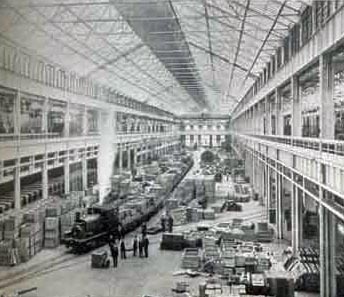


One of the
features of the factory was the water
tower. It is seen below under
construction. The tower was needed to
provide water at an even pressure for operating
hydraulic lifts and a sprinkler system.

In 1919 the Metropolitan Carriage, Wagon and Finance Company and British Westinghouse were acquired by Vickers. In September of 1919 a new company called the Metropolitan-Vickers Electrical Company was formed. Vickers had started out in the foundry business in Sheffield under the leadership of Edward Vickers and George Naylor. By 1917 Vickers were a highly diversified engineering company manufacturing ship, armaments, cars and aircraft. This merger with Westinghouse and the Metropolitan Carriage Wagon Company added electrical engineering and railway interests to the already extensive repertoire.

Throughout the life of Metrovicks there was a constant pattern of change. In 1928 Metrovick merged with the rival British Thomson-Houston (BTH), a company of similar size and basically the same product lineup. Combined, they would be one of the few companies able to compete with the Marconi Company or the English Electric Co on an equal footing. The next year the combined company was purchased by the Associated Electrical Industries (AEI) holding group, who also owned Edison Swan Electric Co (Ediswan); also Ferguson Pailin in Openshaw, Manchester. Rivalry between Metrovick and BTH continued, and AEI was never able to exert effective control over the two competing subsidiary companies.

AEI’s technical excellence was highlighted in 1935 as Metrovick and B.T.H. became the first two firms in the world to construct jet engines (independently from each other). AEI’s greatest work during the War years was its aircraft. In 1938, Metrovick entered into a joint venture with A.V. Roe to manufacture aircraft. Metrovick assembled 'Manchester', 'Lancaster' and 'Lincoln' bombers for A.V. Roe at Trafford Park. As this type of work was very different from their traditional heavy engineering, a new factory was built on the western side of Mosley Road and this was completed in stages through 1940.

In 1940 the iconic
water tower was partially dismantled because it
was seen as a landmark for German bombers.
The remnant of the tower was used as a gun
emplacement.
After the war M-V was involved in the building of jet engines before selling off that business to Armstrong Siddeley in 1947. In the 1950s they were involved in the development of diesel-electric locomotives .
In 1960 the rivalry that had continued between Metrovick and BTH was eventually ended when the AEI management decided to rid themselves of both brands and conduct all their busines under the brand AEI. Seven years later AEI was purchased by GEC which changed its name to Marconi plc in 1999.
The Trafford Park factory closed and was demolished as was most of the village. Only a few remnants of the village remain. The M-V factory which at one time employed 20,000 people is gone forever.
To read much more
about Metropolitan-Vickers you can visit the site
below
Metropolitan-Vickers Electrical Co. Ltd. 1899 - 1949
Metropolitan-Vickers Electrical Co. Ltd. 1899 - 1949